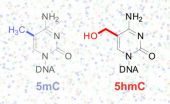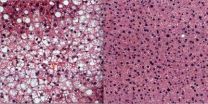(Press-News.org) Research to be published in Science on May 18, 2012, sheds light on a hot-button political issue: the role and effectiveness of government regulation. Does it kill jobs or protect the public?
The new study, co-authored by Harvard Business School Professor Michael Toffel, Professor David Levine of the Haas School of Business at the University of California, Berkeley, and Boston University doctoral student Matthew Johnson, examines workplace safety inspections conducted by California's Division of Occupational Safety and Health (Cal/OSHA). The authors carried out the first evaluation of a "clinical trial" of the state's mandated randomized inspections to discern their effect on both worker safety and companies' bottom lines.
The results overturn conventional wisdom: Workplace inspections do reduce on-the-job injuries and their associated costs, and the researchers could not detect any harm to companies' performance or profits.
"The randomized inspections provided a perfect natural experiment that uses the power of randomization just like a medical clinical trial," Toffel said. "Because Cal/OSHA typically inspects facilities following complaints or recent accidents, you can't study those inspections to get an unbiased understanding of whether they make a difference. By studying the inspections Cal/OSHA conducted at workplaces selected at random, we were able to overcome this problem to learn the actual impact of inspections."
The study found that within high-hazard industries in California, inspected workplaces reduced their injury claims by 9.4 percent and saved 26 percent on workers' compensation costs in the four years following the inspection, compared to a similar set of uninspected workplaces. On average, inspected firms saved an estimated $355,000 in injury claims and compensation for paid lost work over that period. What's more, there was no discernible impact on the companies' profits.
"We spent several years collecting data, not just on injuries, which is very important, but also on other indicators to see whether inspections led to problems they are often accused of causing – like whether they increased costs and led to the elimination of jobs. We looked at company survival, employment, sales and total payroll to see if inspections were detrimental to the employers," said Levine.
"Across the numerous outcomes we looked at, we never saw any evidence of inspections causing harm," Toffel explained. "If OSHA inspections conducted in all 50 states are as valuable as the ones we studied, inspections improve safety worth roughly $6 billion to employers and employees, ignoring pain and suffering. The overall message of our research is that these inspections worked pretty much the way one would hope. They improved safety, and they didn't cost firms enough that we could detect it."
In future work, the research team hopes to better understand which subsets of firms benefit most from inspections and whether the inspections yield benefits in other domains such as improved compliance with environmental regulations.
Beyond workplace safety, the authors believe that randomized trials could be used widely throughout government and business to evaluate new policies, from environmental regulations to educational programs.
"More trials like this would help us find out where regulations work and where they don't," Toffel said. "Because the cost of regulations is very real, governments should be investing constantly to learn how to make them as effective and efficient as possible."
Additional information about the study:
The cost savings applied to both small (less than $2000) and large (more than $2000) workers' compensation claims, and the reduced injuries and cost savings lasted for at least four years after the inspection. These findings suggest the inspections had a lasting, across-the-board effect.
Many previous studies attempting to evaluate the effectiveness of inspections have suffered from the biased way inspection sites are chosen (by complaints or previous accidents) and from problems with how the effects of the injuries are tracked (typically via OSHA logs, which tend to become more comprehensive after an inspection). The new study addressed both of these issues, because companies were selected at random, and because the injuries were measured by workers' compensation claims and other data gathered from sources independent of OSHA-mandated records.
A 1993 California mandate requiring Cal/OSHA to conduct some of its workplace inspections at random provided the opportunity for the study. The mandate was not designed to evaluate inspections, but rather to improve compliance by including random inspections in addition to those initiated by complaints or problems. The randomized inspections examined in this study were carried out from 1996-2006. For each site chosen for a randomized inspection, the team identified a similar control firm eligible for a random inspection but not chosen.
Processing the information took a considerable amount of time – five years – because the researchers had to extract the Cal/OSHA data from a magnetic tape format the researchers had never encountered, and then match the inspected companies' names and addresses to separate databases containing workers' compensation and employment information.
INFORMATION: END
ANN ARBOR, Mich.--- Across history and cultures, religion increases trust within groups but also may increase conflict with other groups, according to an article in a special issue of Science.
"Moralizing gods, emerging over the last few millennia, have enabled large-scale cooperation and sociopolitical conquest even without war," says University of Michigan anthropologist Scott Atran, lead author of the article with Jeremy Ginges of the New School for Social Research.
"Sacred values sustain intractable conflicts like those between the Israelis and the Palestinians ...
The strategy used by Google to decide which pages are relevant for a search query can also be used to determine which proteins in a patient's cancer are relevant for the disease progression. Researchers from Dresden University of Technology, Germany, have used a modified version of Google's PageRank algorithm to rank about 20,000 proteins by their genetic relevance to the progression of pancreatic cancer. In their study, published in PLoS Computational Biology, they found seven proteins that can help to assess how aggressive a patient's tumor is and guide the clinician ...
###
Weill Cornell Medical College
Weill Cornell Medical College, Cornell University's medical school located in New York City, is committed to excellence in research, teaching, patient care and the advancement of the art and science of medicine, locally, nationally and globally. Physicians and scientists of Weill Cornell Medical College are engaged in cutting-edge research from bench to bedside, aimed at unlocking mysteries of the human body in health and sickness and toward developing new treatments and prevention strategies. In its commitment to global health and ...
In two back-to-back reports published online on 17 May in Cell, researchers have sequenced the genomes of 21 breast cancers and analysed the mutations that emerged during the tumours' development. The individual results are described below.
Led by researchers from the Wellcome Trust Sanger Institute, the team created a catalogue of all the mutations in the genomes of the 21 cancer genomes and identified the mutational processes that lead to breast cancer. They found that these mutations accumulate in breast cells over many years, initially rather slowly, but picking up ...
Researchers at the SIB Swiss Institute of Bioinformatics and the EMBL-European Bioinformatics Institute have confirmed the long-held conjecture that studying the genes we share with other animals is a viable means of extrapolating information about human biology. The study, published in the open access journal PLoS Computational Biology, shows how bioinformatics makes it possible to test the conjecture.
Scientists have long looked to model species – mice, for example – to understand human biology. This is at the root of what is called the 'ortholog conjecture': the idea ...
Imagine reading an entire book, but then realizing that your glasses did not allow you to distinguish "g" from "q." What details did you miss?
Geneticists faced a similar problem with the recent discovery of a "sixth nucleotide" in the DNA alphabet. Two modifications of cytosine, one of the four bases that make up DNA, look almost the same but mean different things. But scientists lacked a way of reading DNA, letter by letter, and detecting precisely where these modifications are found in particular tissues or cell types.
Now, a team of scientists from the University ...
VIDEO:
This is an interview with Dr. Panda.
Click here for more information.
LA JOLLA, CA----It turns out that when we eat may be as important as what we eat. Scientists at the Salk Institute for Biological Studies have found that regular eating times and extending the daily fasting period may override the adverse health effects of a high-fat diet and prevent obesity, diabetes and liver disease in mice.
In a paper published May 17 in Cell Metabolism, scientists from Salk's ...
Researchers at the SIB Swiss Institute of Bioinformatics and the EMBL-European Bioinformatics Institute have confirmed the long-held belief that studying the genes we share with other animals is useful. The study, published today in the open access journal PLoS Computational Biology, shows how bioinformatics makes it possible to test the fundamental principles on which life science is built.
Studying genes helps life science researchers understand how our bodies work and how diseases progress. Scientists have long looked to model species – mice, for example – to understand ...
Technology is helping communication companies merge telephone, television and Internet services, but a push to deregulate may leave some customers on the wrong side of the digital divide during this convergence, according to a Penn State telecommunications researcher.
"Moving away from copper lines is an example of abandoning obsolete technology and embracing technology that is faster, better, cheaper and more convenient," said Rob Frieden, Pioneers Chair in Cable Television and professor of telecommunications and law. "But the risk is that we may be creating a digital ...
MADISON – An international team of researchers has discovered how adding trace amounts of water can tremendously speed up chemical reactions—such as hydrogenation and hydrogenolysis—in which hydrogen is one of the reactants, or starting materials.
Led by Manos Mavrikakis, the Paul A. Elfers professor of chemical and biological engineering at the University of Wisconsin-Madison, and Flemming Besenbacher, a professor of physics and astronomy at the University of Aarhus, Denmark, the team published its findings in the May 18 issue of the journal Science.
Hydrogenation ...

